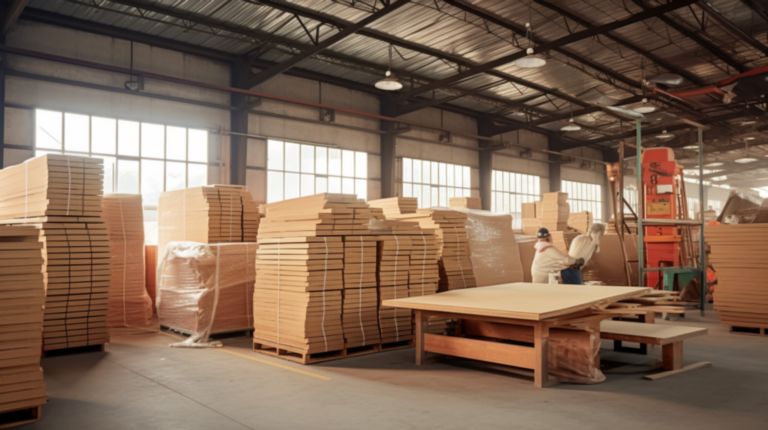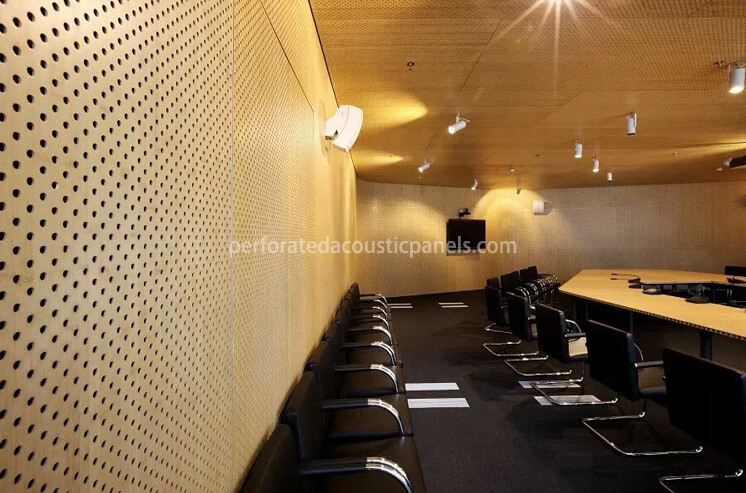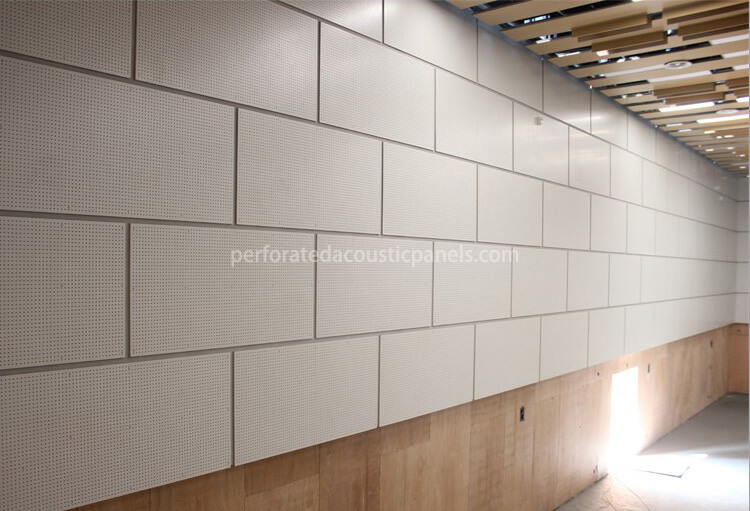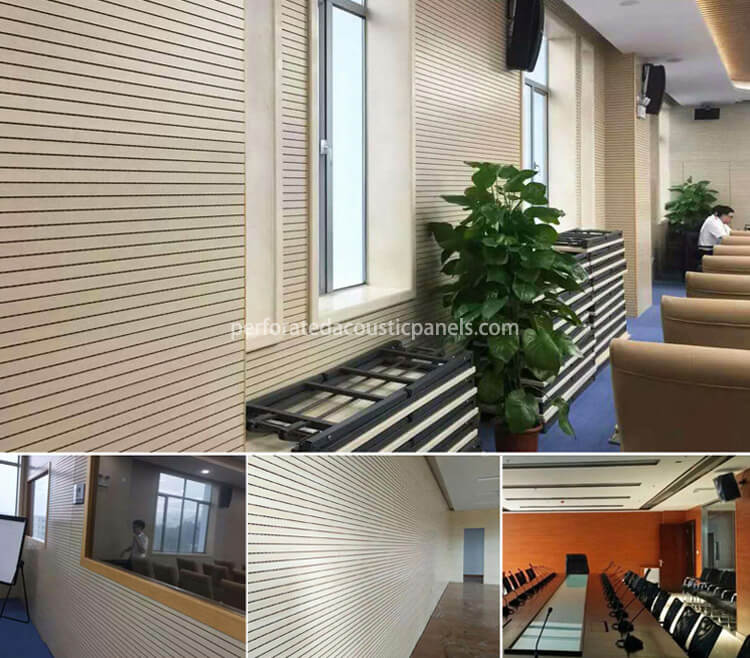I. Introduction
Acoustic environments are of vital importance in modern spaces, ranging from offices and conference rooms to auditoriums and recording studios. To achieve exceptional sound quality and aesthetics, a combination of acoustic solutions is often necessary. One such powerful combination is the integration of wooden perforated wall and fabric acoustic panels. This blog post will delve into these benefits of using both elements in tandem for maximum acoustic benefit.
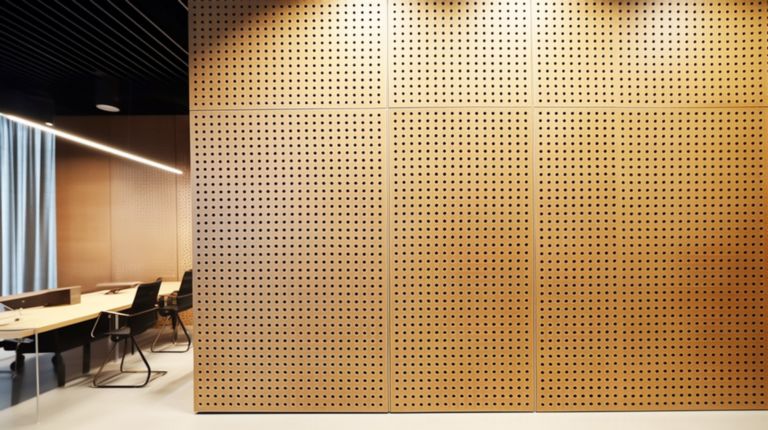
II. Understanding Wooden Perforated Walls
Wooden perforated walls are an innovative architectural feature that not only adds beauty and elegance to a space but also improves acoustic performance. Constructed using high-grade materials like oak wood paneling, walnut wood panels or laminated wood panels with precision-cut holes or perforations strategically positioned to promote optimal sound diffusion, wooden perforated wall is an impressive architectural solution.
Aesthetics and Sound Diffusion
One of the greatest advantages of perforated wood laminate panels is their aesthetic appeal. Their natural beauty combined with intricate patterns created by perforations gives these walls a special charm in any environment, and can even be customized to match various interior design styles for both contemporary and traditional environments.
These perforated walls excel beyond their visual appeal by improving sound diffusion. When sound waves encounter these perforations, they disperse in various directions through multiple perforations, decreasing direct reflection intensity. This effect creates a more pleasant acoustic experience within any given space; be it concert halls or restaurants alike, wooden perforated walls contribute towards creating more immersive sound environments.
In the next section, we will examine fabric acoustic panels and learn their role in complementing perforated composite wood board for optimal acoustic solutions.
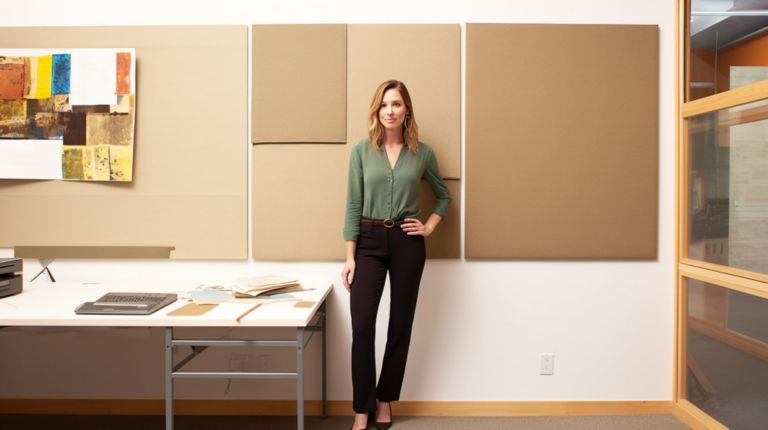
III. Exploring Fabric Acoustic Panels
Fabric acoustic panels are designed to address sound absorption in any given space. These panels consist of a core material such as fiberglass or mineral wool which is covered by fabric for aesthetic reasons and sound absorption purposes. Sound waves pass through and are absorbed by this core material while being visually appealing at the same time.
Sound Absorption and Customization Options
Acoustic fabric panels were developed to reduce unwanted echos and reverberations in rooms, through sound wave absorption by their porous core material which converts sound energy to heat energy, effectively decreasing sound reflections. This helps create an atmosphere more controlled and acoustically balanced.
Fabric sound absorption panels provide architects and designers with many customization options, making it possible to integrate them seamlessly into any environment. Available in various sizes, shapes and colors allowing architects and designers to tailor them according to both aesthetics and functional needs of a room – be it an office environment or recording studio – fabric acoustic panels can help add both visual appeal and acoustic performance.
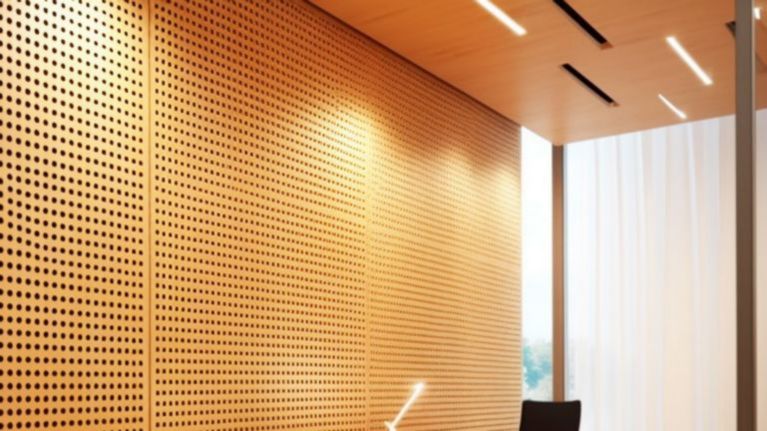
IV. Wooden Perforated Walls and Fabric Acoustic Panels Coexist Synergistically
Combining perforated decorate wood paneling and fabric acoustic panel creates a synergy that optimizes sound diffusion and absorption in any given space.
Enhancing Sound Diffusion with Perforated Walls
Wooden perforated walls, featuring precise-cut holes, play an invaluable role in improving sound diffusion. As sound waves encounter these perforations, they are dispersed across various directions rather than directly reflecting back at themselves, leading to more even distribution throughout the room and decreasing echo potential and improving overall acoustic experience.
Sound Absorption with Fabric Acoustic Panels
Fabric acoustic panels excel at absorbing sound energy. When sound waves strike the fabric surface of an acoustic panel, they pass through it into its porous core material such as fiberglass or mineral wool and are effectively absorbed, helping create a more controlled and balanced acoustically balanced environment. This absorption process serves to balance out and control reflections within any given space.
Benefits of Acoustic Modification to Building Structures and Architecture
Wooden perforated walls combined with fabric acoustic panels offer an effective acoustical solution to any space, providing sound diffusion by scattering waves away from concentrated reflections or echos, for an immersive yet balanced audio experience. This combination creates more engaging listening environments.
Fabric acoustic panels absorb sound energy, decreasing reflections and reverberations for an intelligible sound environment. By eliminating echos, these panels contribute to clearer dialogue in any given space, with sound being evenly dispersed but well-controlled within it. Diffusion and absorption combine forces for maximum effectiveness in creating this space-enhancing sound experience.
No matter if it be for concerts, conference rooms or restaurants – wood board with holes combined with fabric acoustic panel create optimal acoustic performance that creates an enjoyable and immersive sound experience while adding to overall ambience and functionality of space.
Next, we will explore the range of applications and design possibilities associated with incorporating perforated wooden board with holes and fabric acoustic panel into various environments.
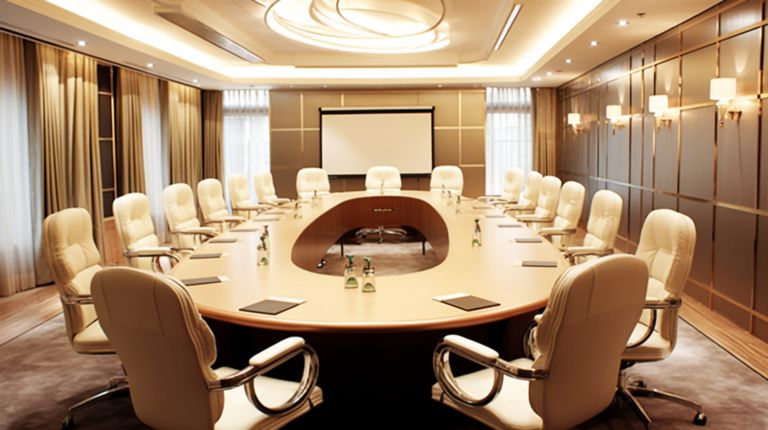
V. Applications and Design Options
Perforated acoustic wall panels combined with fabric acoustic panels provide endless design and application options, so let’s take a look at where this combination may work effectively:
Commercial Spaces
Offices: Create an efficient and acoustically comfortable workspace by including perforated wall cladding and fabric acoustic panel in your design scheme, these elements can help reduce noise distractions while increasing speech intelligibility.
Educational Institutions
Classrooms: Create an ideal learning environment by installing perforated square wood tile and fabric acoustic board to reduce noise disturbances and enhance concentration levels for both teachers and students alike. These solutions will help maintain an ideal atmosphere.
Cultural and Entertainment Spaces
Auditoriums: Perforated custom wood paneling combined with fabric acoustic panel makes an excellent combination for auditoriums where sound quality and aesthetics are of utmost importance. Their combination facilitates sound diffusion and absorption for an immersive audience experience.
Design choices and customization possibilities are virtually limitless when it comes to perforated laminated wooden tiles. Crafting your ideal aesthetic using various wood types ranging from oak, walnut or eco wood panels can create beautiful perforation patterns tailored specifically for each design aesthetic – square wood tiles to composite wood boards! Fabric acoustic panels offer endless design opportunities that integrate into any interior decor concept seamlessly.
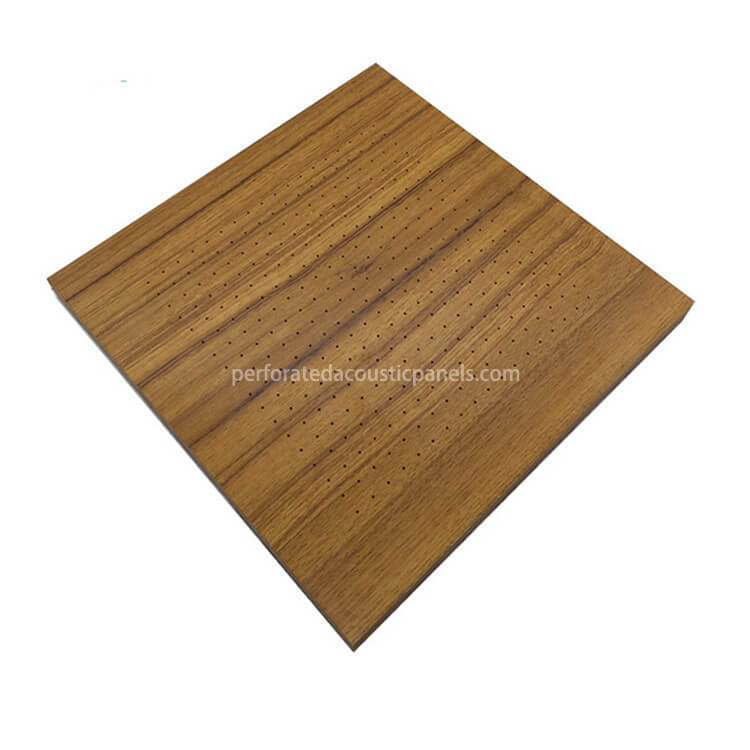
Microperforated Acoustic Panels
Micro Perforated Wooden Acoustic Panels Micro-Perforated Wood Veneer Panels Microperforated Panel
VI. Installation and Maintenance
Installation and maintenance practices that ensure long-term performance of fire rated perforated red wood panel and fabric acoustic panel are essential.
Installation Process
- It is highly advised to seek help from professional installers or experienced individuals for accurate installation of perforated eco wood panel and acoustic fabric panel. – Follow all manufacturer specifications while employing appropriate tools and techniques during this process.
- For optimal stability and performance, take care in aligning and securely fastening any new wall fixtures to the surface of the wall.
Maintenance and Care
- Regularly clean perforated eco wood panels and fabric acoustical panels using a soft brush or vacuum cleaner with soft bristles in order to remove dust and dirt, while checking manufacturer instructions for specific cleaning recommendations on fabric panels.
- Check your panels regularly for signs of damage or wear, and address any concerns promptly.
Follow these installation and maintenance guidelines to ensure your wooden perforated wall panel system and fabric acoustic board continue to provide optimal performance and aesthetics for many years to come.
VII. Conclusion
In this blog post, we have explored the acoustic benefits of combining wooden perforated walls and fabric acoustic panels. We discussed how wooden perforated walls improve sound diffusion by means of their precision-cut holes while fabric acoustic panels absorb sound energy while decreasing reflections and reverberations – creating a synergy effect which optimizes acoustic performance across various spaces.
Wooden sound absorbing perforated walls not only add aesthetic value, but they can also aid sound diffusion to create an immersive and balanced audio environment. Fabric acoustic panels excel in sound absorption – reducing unwanted echoes while improving speech intelligibility – thus creating a comprehensive acoustic solution that improves both the aesthetic appeal and acoustic performance of any given space.
Perforated wall covering and fabric acoustic panel offer great versatility when applied in various settings, from commercial spaces like offices and restaurants, educational institutions and cultural venues to cultural events – making for a more enjoyable acoustic experience overall.
Design options and customization capabilities offered by wooden sound absorption perforated walls and fabric acoustic panels allow seamless integration into any interior design concept. From choosing wood types and perforation patterns to fabric colors and dimensions – all can be personalized to suit different aesthetics and requirements.
Installation and maintenance are both key factors in ensuring optimal performance for black perforated board wall and fabric acoustic wall, in order to achieve their fullest potential. Following proper guidelines during setup as well as following regular maintenance schedules can extend their longevity and functionality over time.
Ultimately, acoustic wooden perforated walls and fabric acoustic panels together offer considerable acoustic advantages. By increasing sound diffusion and absorption capabilities, this powerful combination produces more immersive sound experiences in various spaces such as concert halls, classrooms or restaurants. When considering optimal acoustic performance for any design project, involving perforated timber acoustic panel and fabric acoustic panel as part of their plan design can greatly contribute to optimal acoustic performance.
If you want to achieve exceptional sound quality and aesthetics, don’t overlook the potential of combining wooden acoustic perforated walls and fabric acoustic panels to achieve excellent acoustics. Explore all available options with professional help, and create an acoustic environment which enhances both ambience and functionality of your space.
